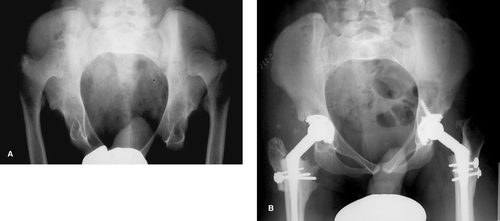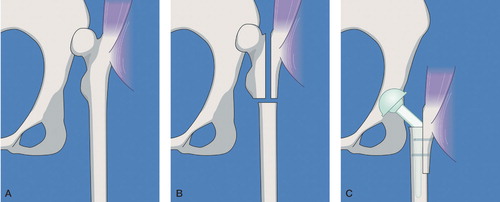Figures & data
Table. Demographic data and results of clinical and radiographic examinations of 19 CDHs operated on with the Paavilainen technique. 4 patients were operated on bilaterally and are thus specified by letters a and b in the case column
Figure 1. Case no. 2. Congenital dislocated hips bilaterally; grade D according to Efthkhar. A. Preoperatively. B. Postoperatively, the acetabular components (Mallory head) were seated in the true acetabulum. A straight cementless dysplasia stem (Biomet) with a 22-mm head was used. The greater trochanter was fixated with 2 screws. A prophylactic cable was placed around the femur before insertion of the stem.

Figure 2. A. CDH grade D. B. Consistent with the preoperative templating, an extended trochanteric osteotomy is performed followed by a transverse osteotomy of the femur. The medial segment is removed. C. A straight stem is inserted and the acetabular component is placed at the level of the true acetabulum. The greater trochanter is advanced distally until the gluteus medius muscle is tight, and then it is fixated with 2 screws.
